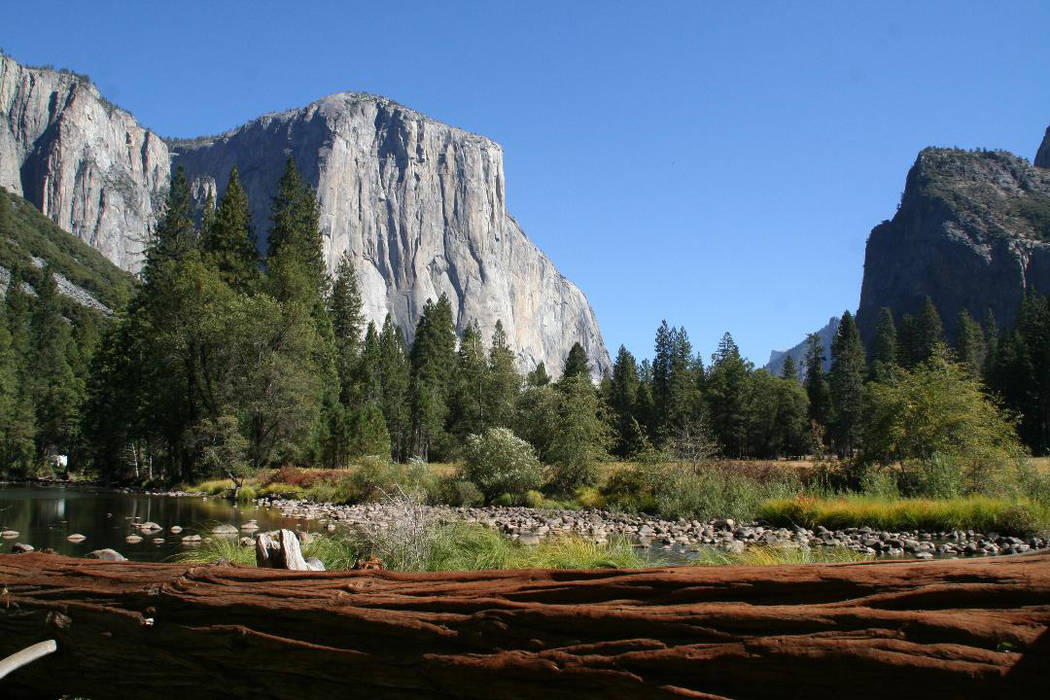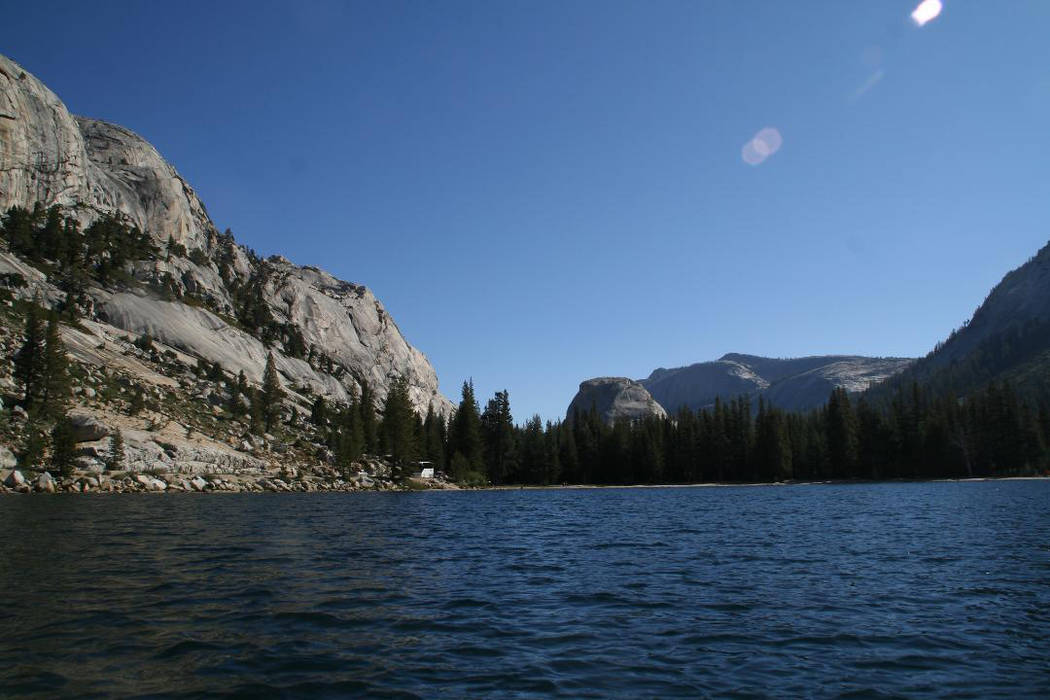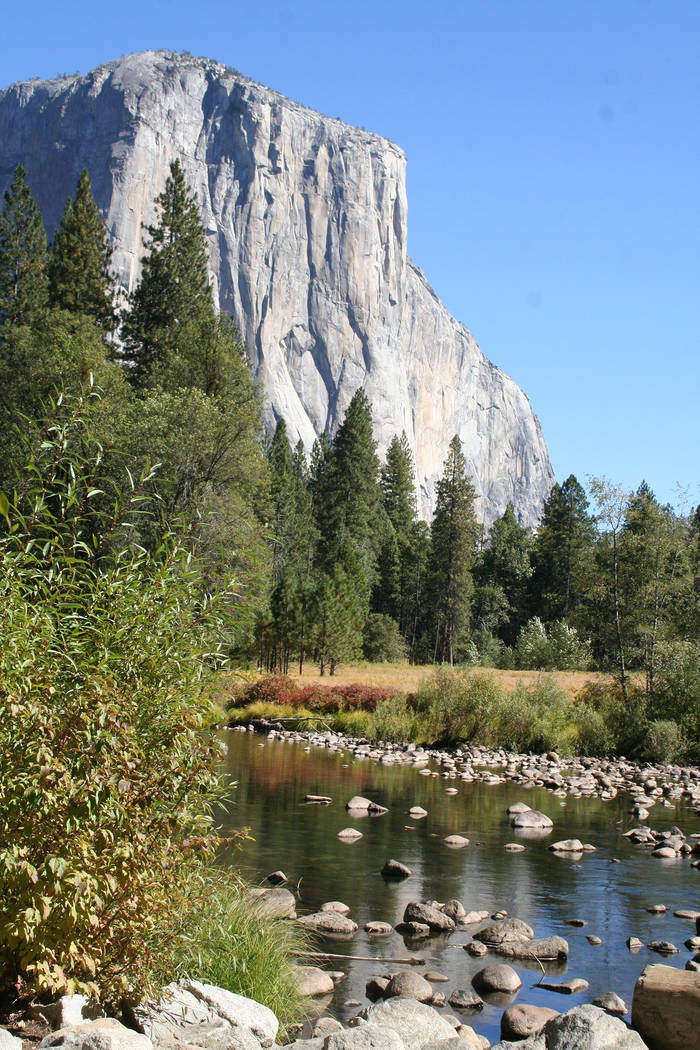Yosemite home to iconic American sights
Some of the most stunning and iconic sights in America can be found in Yosemite National Park in California. While most visitors spend days traveling to the park from around the world, Southern Nevadans can get there in less than a day’s drive.
Furthermore, the quickest route to the hub of the park, Yosemite Valley, is also the most scenic, treating you to the sight of lakes, meadows, granite domes and scenic overlooks. This is via the east entrance, Tioga Road (state Route 120).
Tioga Road leaves from the town of Lee Vining, California, and immediately climbs up into the Sierra Nevada, reaching an elevation of 9,945 feet before descending to your destination. As you might imagine, this sky-high road is open only in summer, but that’s the time to head for Yosemite anyway.
The park encompasses nearly 1,200 square miles and has elevations ranging from 2,000 feet to 13,000 feet. There are more than 750 miles of hiking trails ranging from easy to strenuous. In Yosemite Valley, which has an elevation of about 4,000 feet, you can expect August daily high temperatures in the high 80s and lows of 56 degrees. September temperatures average as high as 82 degrees with lows of 51.
First-time visitors usually start in Yosemite Valley. Here you will find the main visitor center, a post office, a medical center, a market, restaurants, campgrounds and a variety of lodging. It is also the place to see Half Dome and El Capitan, famously photographed by Ansel Adams, and to see how nearly your own photos can compare with the work of the master. Here also are the trailheads for hiking to Yosemite and Bridalveil Falls and other classic destinations.
Plan to stay a minimum of two or three nights so you have enough time to see the park’s iconic sights.
When traveling to Yosemite in the summer, be sure to arrive first thing in the morning, before 8 a.m., or very late in the afternoon, as the entry stations have long waiting times from late mornings through early afternoons.
Note that parking in the valley is extremely limited. Once you have claimed a parking place, the quickest and easiest way to get around is to walk or take the free shuttle bus to any destination. Another alternative to get around is by bike. Bike rentals are available, and you can ride 12 miles of mostly flat, paved trails.
Comfortable hiking boots or sneakers with good tread are important, and because of the temperature changes, it’s a good idea to dress in layers, wear a hat and apply sunscreen. And bring along a refillable water bottle or hydration system.
Binoculars also come in handy so you can get an up-close look at rock climbers scaling El Capitan.
Because of the park’s popularity, reservations are strongly recommended. Visit https://www.travelyosemite.com for information on lodging and campgrounds in Yosemite and in the surrounding towns.
Use the park service’s official site, https://www.nps.gov/yose/index.htm, or call 209-372-0200 for more information on the park.
Many of Deborah Wall’s columns have been compiled into books about hiking in the Southwest. She is also the author of “Great Hikes, a Cerca Country Guide” and a co-author of the book “Access For All, Seeing the Southwest With Limited Mobility.” Wall can be reached at Deborabus@aol.com.
Directions
From Boulder City take U.S. Highway 95 north about 135 miles to Beatty. Turn left onto Nevada Route 374 and go west for 27 miles. Then go west for 73 miles on California Route 190 that becomes California Route 136, just before passing through Keeler, California, and intersecting U.S. Route 395, just south of Lone Pine. Follow U.S. 395 north for 122 miles to Lee Vining (where some people stop for the night.) Go left onto Tioga Road, (California Route 120). Drive about 75 miles to Yosemite Village.


















